An Epic Norwegian Road Trip Part 1: Ringebu stavkirke
Read this post on TravelFeed.io for the best experience
I'm still working on my countdown of my top 10 travel videos, and in the last one, I was road tripping with my mom through Ireland. That got me thinking about the road trip we went on shortly before, from Oslo out to fjord country.
I have a nice video from the whole trip that I was planning to drop in at #6 on my Top 10 coutndown, but then I realized I could do a list countdown just from the trip itself.
So that's just what I'll do: a 6-part series about the highlights of the trip, with small videos for each one, and then the grand finale video of the whole trip as the final post, and #6 on my countdown.
First stop: Ringebu stavkirke
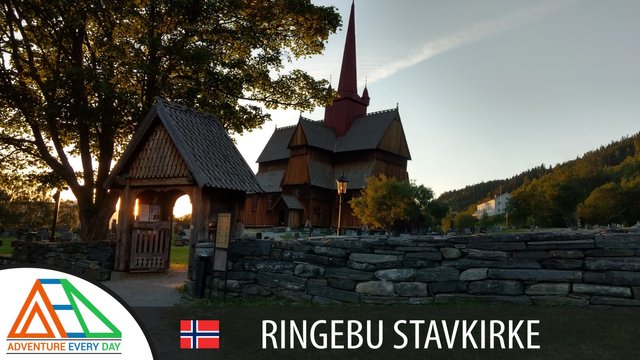
Ringebu is located a little ways north of Lillehammer, and the stavkirke (stave church) is just a short distance off the main highway, E6, so it made for an easy side stop.
As I didn't previously know there was a stave church here, this was actually somewhat of an unexpected stop following an evening spent in Lillehammer. Lillehammer is certainly worth a stop as well if you are ever taking E6 north from Oslo. Of course, it was the site of the 1994 Winter Olympics, and the Olympic Park and Museum are open for visitors. For being a site of such a large event as the Winter Olympics, you might expect Lillehammer to be a bit larger than it actually is, checking in at a cozy 27,500 residents. It therefore maintains a small town Norwegian feel, while offering attractions such as the aforementioned Olympic Museum and Maihaugen, an outdoor folk museum with traditional buildings brought in from various sites in Norway, including its own stavkirke which was originally located at Garmo.
Like many Scandinavian cities, Lillehammer has a pedestrians only street, called Storgata in Lillehammer, in the center of town where many shops and restaurants can be found. We didn't have much time, so we spent the evening here and had a fantastic dinner out on the balcony of the Nikkers restaurant overlooking the river.
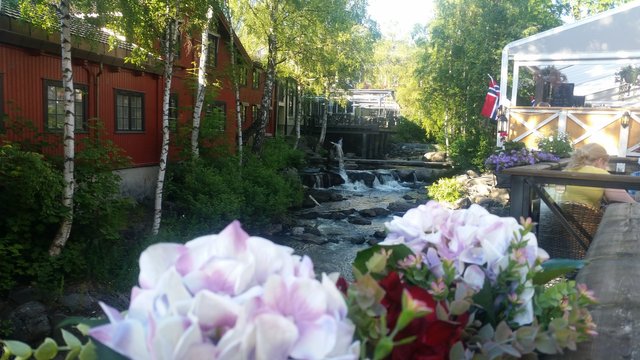
One funny thing about Nikkers is they have a moose with its head sticking into the main part of the restuarant, and the rear end sticking out the back.
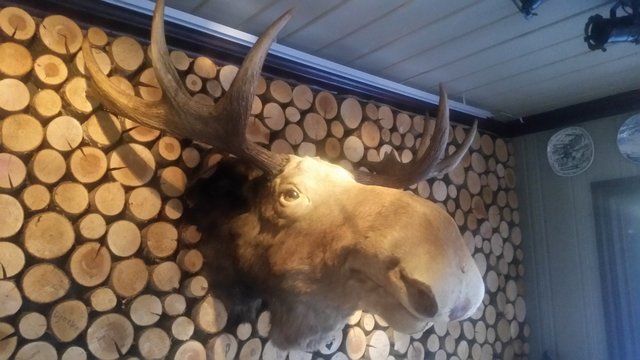
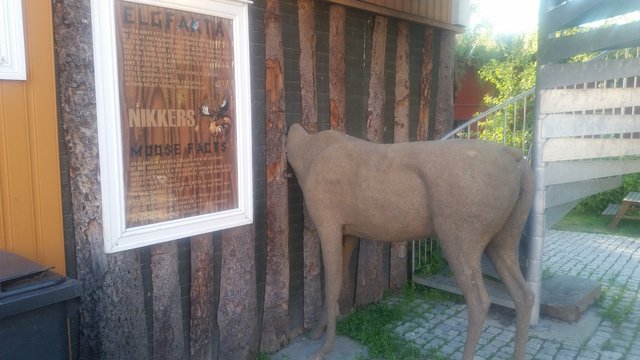
Anyways, moving on to Ringebu, I saw the sign for the stavkirke as we were motoring along E6. Knowing that my mom always loves seeing churches, I took an unannounced turnoff. Regardless of your religious leanings, stave churches are historically significant and interesting to look at in detail.
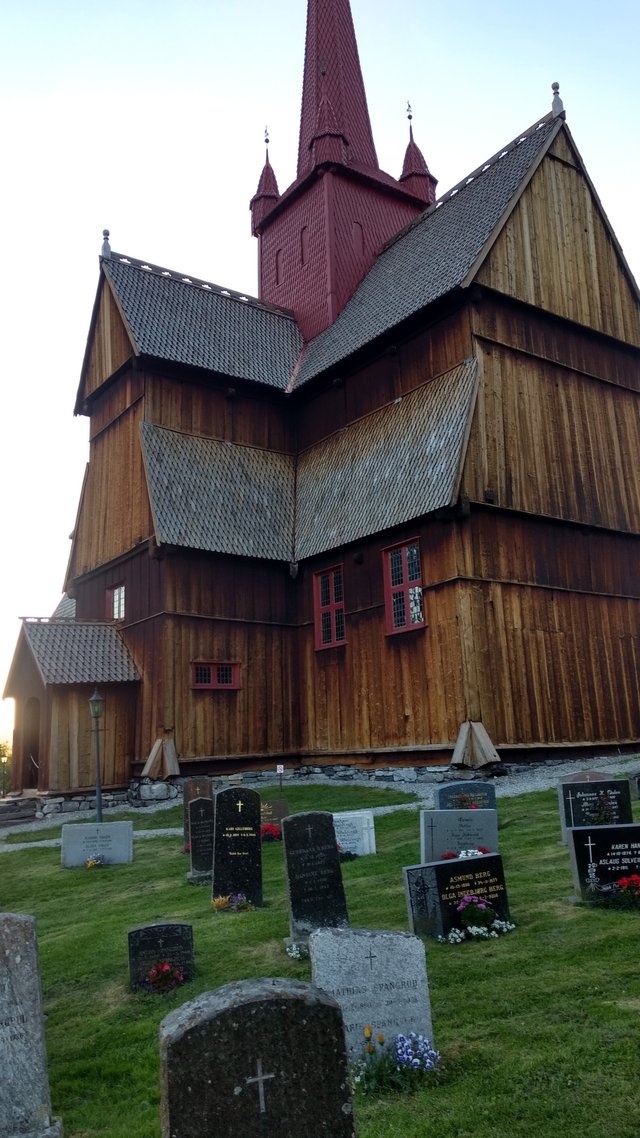
Stave churches date back upwards of 1000 years and were once a common sight around northwestern Europe. However, almost all of the surviving stave churches are located in Norway. There are 28 of them in all here, most originally built from about 1150-1350. Ringebu stavkirke is believed to be as old as the 12th century.
Stave churches are not your typical wooden structures. They feature elaborate designs, often resembling what you might think of as belonging more to Viking ships than to churches. And you wouldn't be wrong, as although they were Christian buildings - not Viking, some themes of animals and dragons are believed to have stemmed from Norway's Viking past.
The fact that they used wood instead of stone also likely originates from Viking culture as well, since the Vikings were so skilled in building wooden ships and homes.
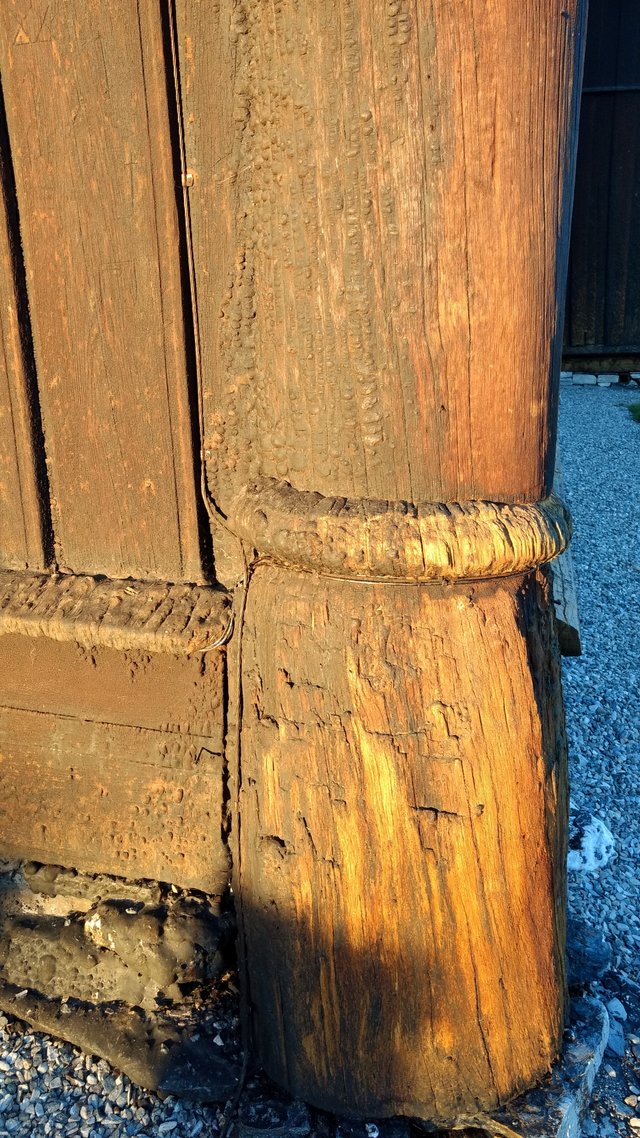
The defining characteristic that classifies a structure as a stavkirke is the frame assembly technique. Large vertical posts, which were called stafr in Old Norse and stav in modern Norwegian, are the backbone of the building. Horizontal cross beams sit atop the posts to create the interior space within the structure.
The verticality of the construction continues with the walls, which are also made of timber and consist of vertical planks standing on sills. These are referred to as stave walls.
Despite the varying shapes and sizes they come in, all stave churches share these characteristics. So now you know what makes a stave church a stave church!
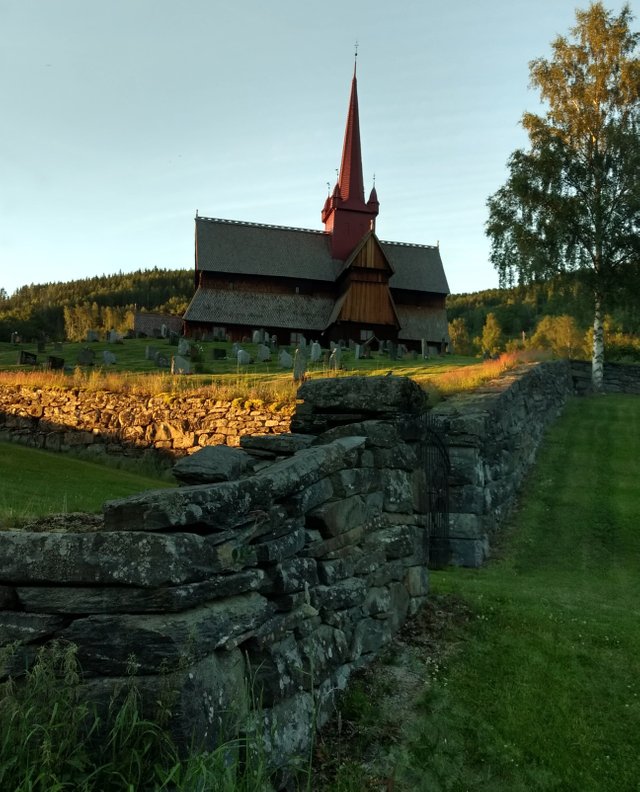
Some fun facts about it's history gleened from the signage there:
Christianity is believed to have been introduced into the region by King Olav Haraldsson in 1021.
It has a statue of St. Lawrence from c.1250.
The west doorway has a dragon motif and is from the Middle Ages.
The tower was built in the 1630s by Werner Olsen.
The altar was installed in 1686; the pulpit in 1703.
Restoration work in 1921 revealed strange carved faces high up on each stave pillar.
892 coins from Norway, Sweden, Denmark and Germany were found under the floor. The oldest was from the 1020s.
The present organ was installed in 1982.
Like many churches, it is surrounded by a graveyard:
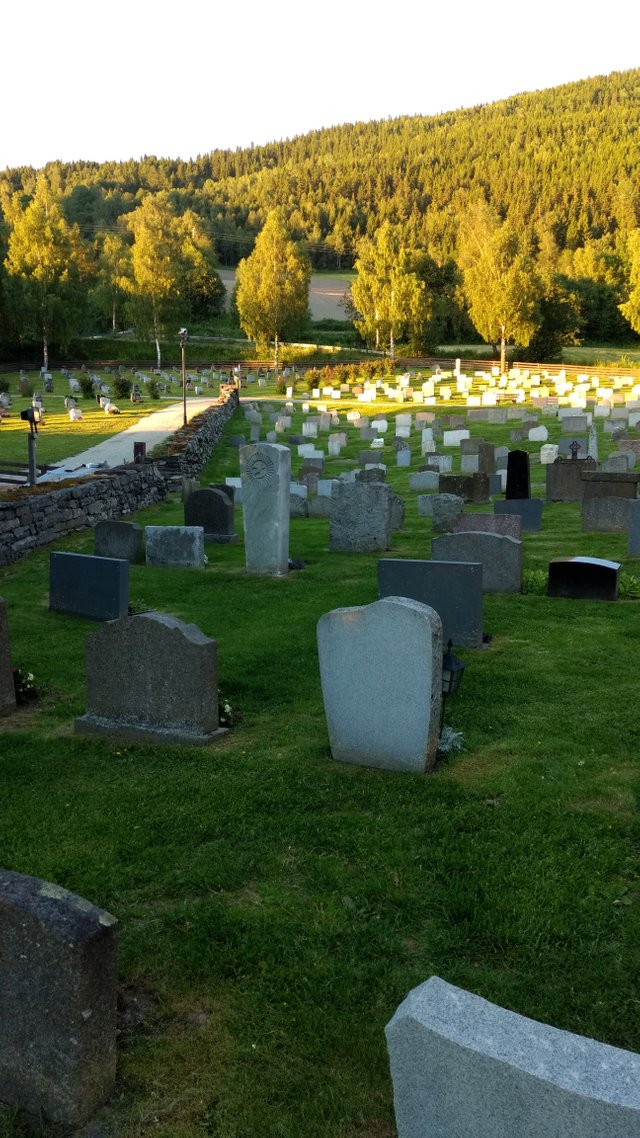
For more views of not only the Ringebu stavkirke but some others including the Garmo stavkirke at Maihaugen, here is the video:
That's all from Ringebu! Next up, we'll explore a grass-roof cabin at Vågåmo.

View this post on TravelFeed for the best experience.
Congratulations @adventureevryday! You received the biggest smile and some love from TravelFeed! Keep up the amazing blog. 😍 Your post was also chosen as top pick of the day and is now featured on the TravelFeed.io front page.
Feedback
We have 1 tips for you on how you can improve your post to receive more smiles for your future posts. To view the feedback, head to your TravelFeed Dashboard. Next to your post you will find a smiley, a click on it reveals the detailed feedback.
Thanks for using TravelFeed!
@for91days (TravelFeed team)
PS: Have you joined our Discord yet? This is where over 1000 members of the TravelFeed come together to chat. Join us!